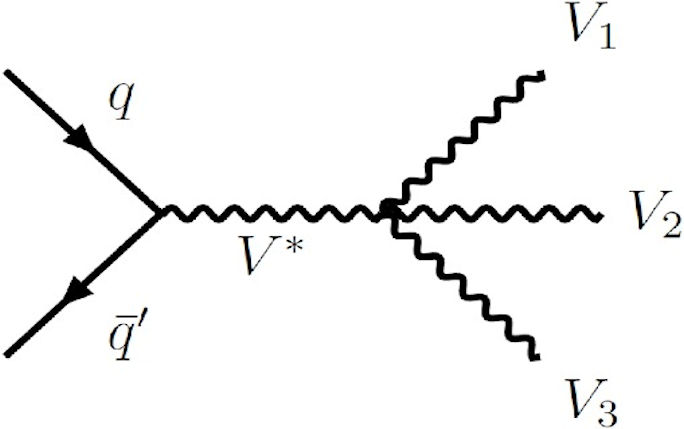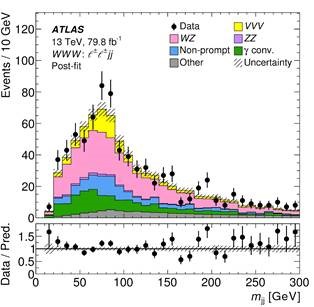ATLAS reports first evidence for production of three massive vector bosons

With the availability of the large, high-quality Run2 dataset ATLAS continues to explore rarer processes. In a paper submitted at the end of March, ATLAS reports first evidence for the production of three W or Z bosons using the data collected in the years 2015-2017. ATLAS Liverpool member Dr Jan Kretzschmar contributed significantly to the collaboration-internal review of the analysis and paper.

The W- and Z-bosons are the carriers of the electroweak force. When produced singly in large quantities, they are used for precision studies of Standard model parameters, such as the W-boson mass. Simultaneous production of two bosons is by now a well-studied process that is sensitive to anomalous self-couplings between three bosons. However, the simultaneous production of three bosons is among the rarest processes explored at the LHC so far and opens a new window to search for anomalous couplings between four bosons, which are sensitive to possible contributions from yet unknown particles or forces.
The ATLAS analysis concentrated on the search for WWW and WWZ production, using several of possible W and Z decays to leptons or jets, analysed with advanced analysis techniques based on machine learning. Combining four channels, ATLAS observes three-boson production at a significance of 4 sigma.
Further information:
- Submitted paper https://arxiv.org/abs/1903.10415
- ATLAS Physics briefing http://atlas.cern/updates/physics-briefing/evidence-three-massive-vector-boson-production.
Search for WWW production, where two W-bosons decay to a pair of leptons same-charge electrons or muons (not shown) and the third W-boson decays to two jets with a mass mjj near the mass of the W-boson of 80 GeV. The WWW signal expectation is shown in yellow and the data displays a clear excess, compatible with a WWW signal at a rate of about twice the expectation.